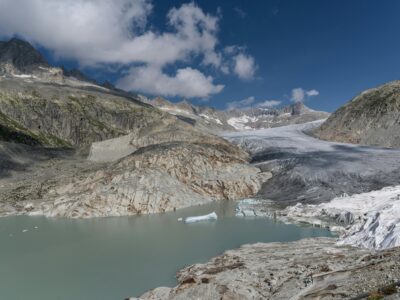As countries around the world shift to renewable energy sources, one pivotal source of cost-effective, clean, sustainable energy is growing increasingly vulnerable to climate change. Hydropower is currently the largest renewable energy source worldwide, but climate change is threatening its energy generation with droughts, shrinking glaciers, and increased evaporation. A new global review addresses and analyzes the impact of climate change on hydropower in regions throughout the world. The study focuses on how glacier retreat, droughts, and increased water demand will affect hydropower projects and the communities that rely on them.
Hydropower is currently the “most important and widely used renewable source of energy” worldwide, according to the U.S. Department of the Interior. Over 35 countries rely on hydropower for at least half of their national electricity demand. Additionally, as many countries look to reduce their reliance on fossil fuels, hydropower use is increasing by 2.1% each year.
However, hydropower electricity is not without its problems. Dams can restrict passage for migrating fish like salmon in the US Pacific Northwest and can negatively impact water quality. In addition, as water becomes scarce due to droughts, glacier retreat, and decreased snowmelt, less and less water will be available to use for energy generation. At the same time, increases in water output from glacial outburst floods and severe storms may temporarily help some hydropower generation—if stations can withstand the power of millions of gallons of water rushing downstream at once.
The starkly conflicting ways climate change can impact hydropower is where the new global review comes in. While studies have examined the local or regional impact of climate change on hydropower, Asphota Wasti, a Ph.D. candidate in environmental engineering at the University of Cincinnati and lead author of the review, was interested in how climate change was impacting hydropower on a global scale.
Along with her team, Wasti reviewed hundreds of published studies on hydropower, climate change, and hydrology to create a detailed report of how climate change affects different hydropower projects and watersheds on every continent except Antarctica (where no hydropower generators exist). “Climate change affects hydropower worldwide, but the effect is not uniform and depends on a lot of different factors,” Wasti explained in an interview with GlacierHub.
The report detailed the impacts of climate change on hydropower for watersheds across the globe, including the Nile in Africa, the Columbia in North America, and the Indus in Asia—all of which are key international watersheds.

The review identified four primary ways climate change will impact global hydropower: depletion of glaciers, reduced snow melt, increased precipitation extremes, and increased water evaporation and demand. Depending on the region, the effects of each of these four mechanisms vary widely, according to Wasti. For instance, the loss of glaciers in the Andes in South America is projected to reduce streamflow, leading to less hydropower generation. However, in the Alps, glacier retreat has not had as large of an impact on hydropower because many projects also rely on snow-fed rivers and have large reservoir capacities, making them less dependent on glacier meltwater.
While some overarching themes can be identified throughout regions and mechanisms of impact, the takeaway of the review is the great diversity of cases. The particular circumstances of each case depend on watershed structure, the characteristics of hydropower projects, and the concerns of the communities and nations that rely on such projects for renewable energy.
The review also examined socioeconomic components of climate change and hydropower. It found that failure of hydropower infrastructure tended to harm local communities, leading to water scarcity, debt, delays in construction, and even displacement. Wasti emphasized the importance of the scientists and decision-makers understanding the “local hydrology, seasonality, and community dynamics before examining how to adapt a hydropower project for climate change” — what’s known as a bottom-up strategy. For instance, governments and developers employing a bottom-up strategy would consult with community members, local scientists, and non-governmental organizations before beginning the project. This approach is becoming more common, but many communities have already been affected by top-down hydropower plans that have failed to adequately protect their community.
The global review provided a detailed overview of how climate change would impact hydropower in different world regions and through different systems. It also showed that adapting to these changes will require a bottom-up strategy. By looking at these projects at a local level, scientists, policymakers, and communities can work together to address the impacts of climate change on a renewable energy source important to their communities.



